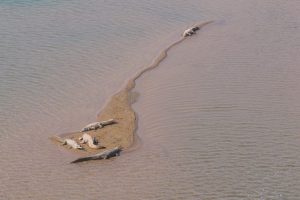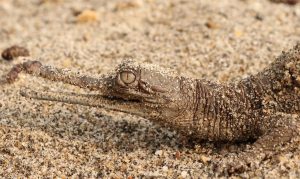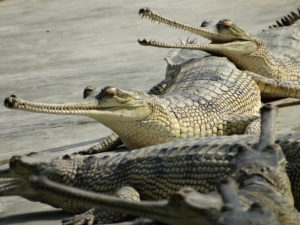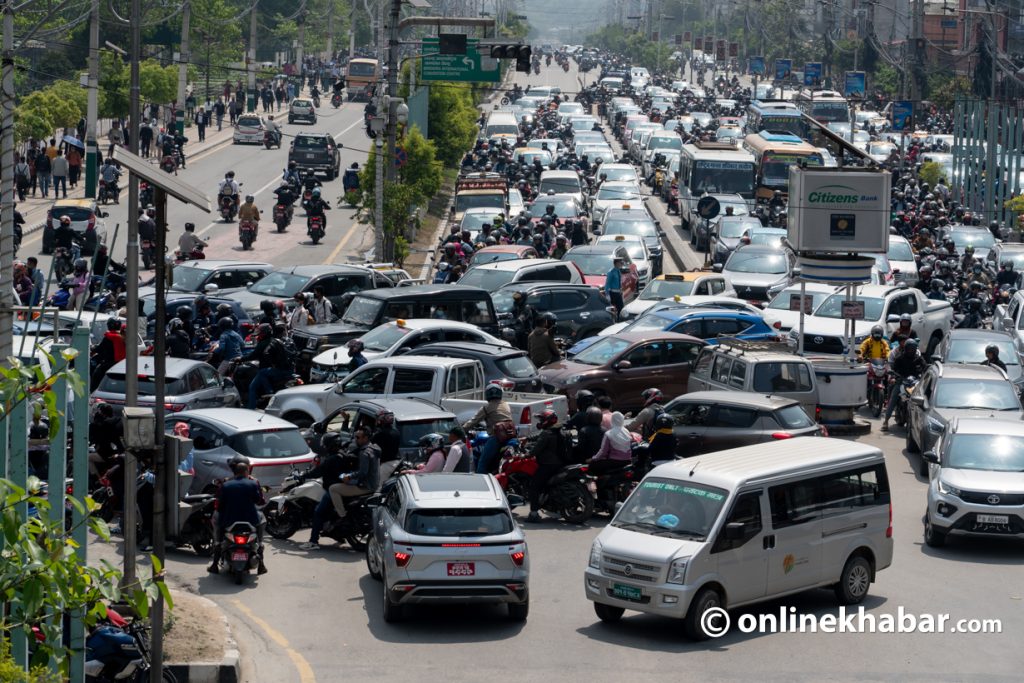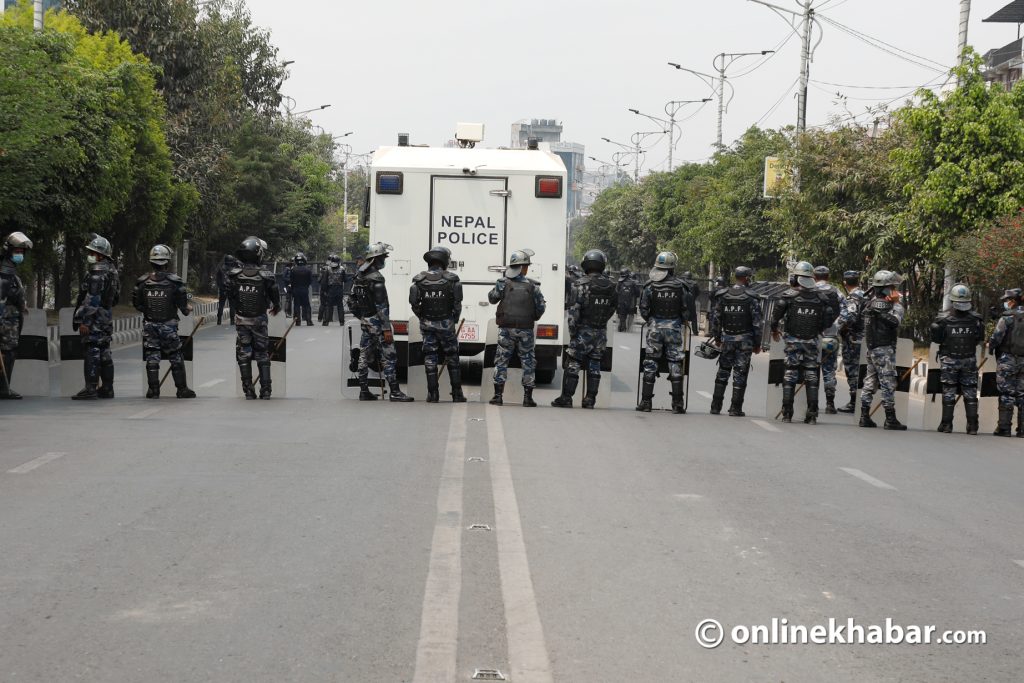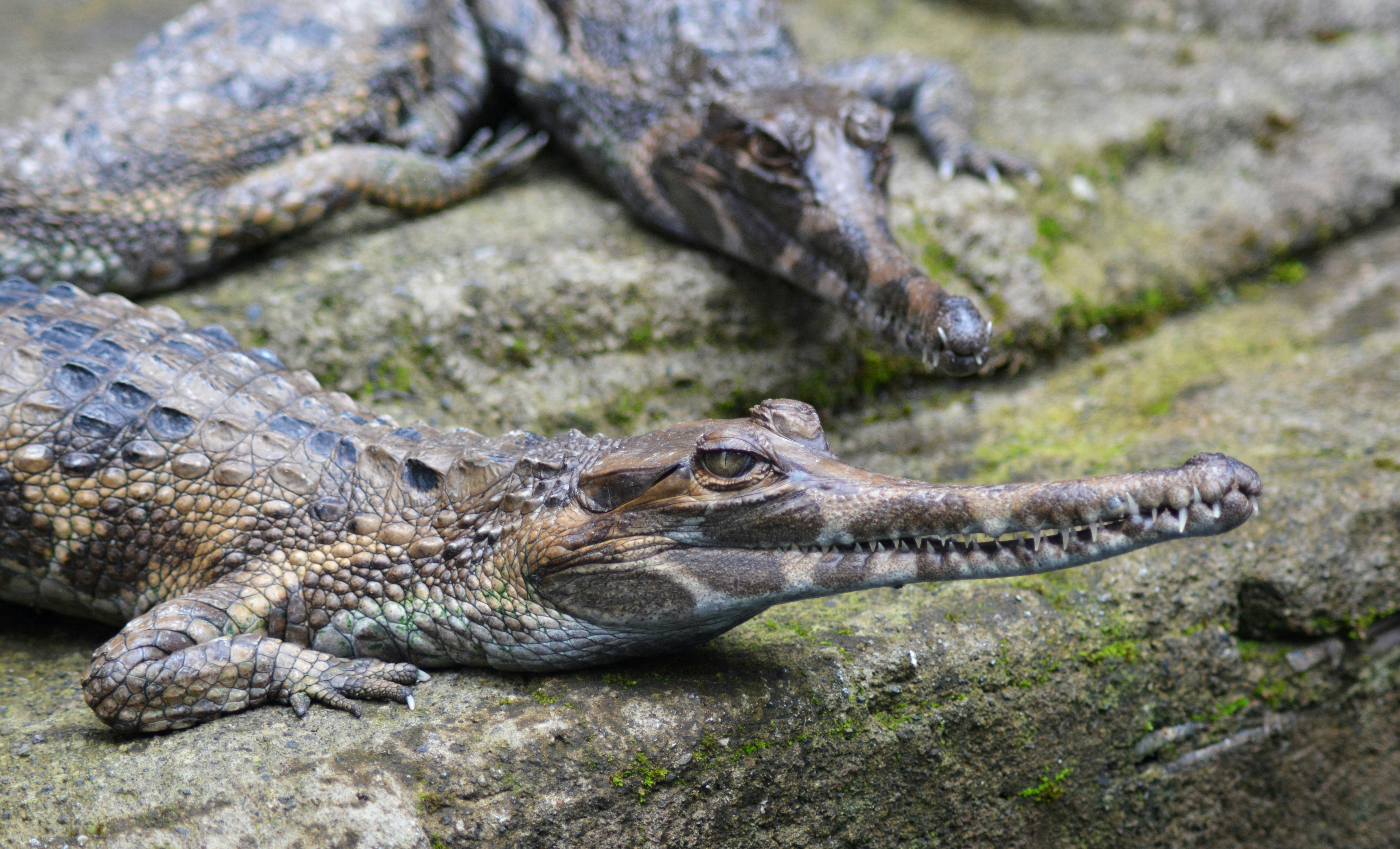
Fifty-six year-old Kaluram Bote has awaited the end of February, which marks a crucial time for gharial breeding in Chitwan, between Nepal’s Terai and hilly regions. Rowing his boat in the Rapti River, he sets off on an early morning hunt for gharial eggs and fetches them back to the breeding centre. For more than two decades now, Kaluram has been deployed by Chitwan National Park to collect the reptile’s eggs, which are hatched in captivity at the gharial breeding centre in Chitwan.
“Once the eggs are collected and hatched in the breeding centre, the hatchlings are fed and taken care of in captivity until they are released in rivers to grow for the rest of their lives,” says Kaluram, one of the Indigenous Bote people who works as a “keeper” of the critically endangered species.
The park’s gharial population has seen an increase over the past few years, from 239 in 2023 to 265 in early 2024. But despite this jump, the keepers’ future, and that of other Bote people, is uncertain.
Since the park’s inception, there have been restrictions on fishing licenses to protect gharials. Indigenous Bote people, faced with the loss of ownership of their ancestral lands, have demanded their right to continue fishing in rivers without limitation, as it has been their traditional source of income. But many people can no longer see a future in fishing, even if the number of gharials eventually stabilises. And the livelihood alternatives they were offered, such as working as gharial keepers, have so far been insufficient, they say.
Keepers like Kaluram only work a few months of the year, during spring, on a contractual basis and they have no job security.
Kaluram’s home is one among the 115 households living on the banks of the Rapti River. Like his Bote ancestors, he has spent all his life fishing and rowing boats on the river, which flows from east to west through the Chitwan Valley forming the northern border of Chitwan National Park and joins the Gandaki River inside the park’s protected area. When Chitwan National Park was created in 1973, many were evicted and they now have limited access to fishing upstream and to the protected area itself.
For generations, these communities have depended on fishing and forest resources for their livelihoods. In addition to the Indigenous Bote, ethnic communities including the Majhi, Kumal, Darai and Musahar have depended on fishing in Narayani and Rapti for their daily sustenance.
Although many parents like Kaluram raised their children to be economically dependent on fishing, restrictions and insufficient livelihood options are changing their minds. They are now encouraging their kids to leave local communities to work as migrant labourers in Persian Gulf countries to lead a better material life.
“Our struggles are futile; it feels like we are dead because our voices are not heard,” Kaluram says.
The gharial’s traditional keepers

To protect gharials from extinction, the government of Nepal launched the Gharial Conservation and Breeding Center as a project at Kasara, Chitwan National Park, in 1978. Since then, a few Bote people have been hired to collect eggs in the wild during spring, while others work throughout the year as employees at the centre. Their traditional knowledge of gharial breeding and their role as the original keepers of the species made them an attractive choice.
Among the seven Bote people working in the breeding centre is Aitaram Bote, who has been a keeper for about three decades now. His daily routine includes feeding and taking care of gharial hatchlings and monitoring them.
From boating to the riverside to collecting eggs, catching fish to feed gharials and taking care of the hatchlings, Bote people have significant roles to play in gharial conservation. In these years, there were several times when Aitaram was under attack. “Gharials are not as aggressive as the mugger crocodiles but there still are risks persisting from both the species during the egg collection process. It is important to closely watch their movement when the process is carried out,” he says.
Only mature females are capable of producing the maximum number of fertilised eggs, up to 60, laying one at a time every two or three minutes. The eggs are laid under fresh river sand about 60-90 cm (23-35 inches) deep. If they sense any kind of threat while producing eggs, they may lay their eggs on the riverbed, which could impact their survival.
“We take care of every tiny detail and fetch the eggs to the breeding centre,” says Kaluram.
At the breeding centre, the eggs grow into hatchlings for the next three months (mid-April to July) and are fed river fish until they are 5 or 6 years old. Once they grow up to 1.5 meters (about 5 feet), they are released back into the rivers.

From 1981-2017, 1,246 gharials were released in the Rapti, Narayani, Kaligandanki, Koshi, Karnali and Babai rivers. However, gharial breeding is still a challenge. Conservationists point to unsustainable fishing practices, both subsistence and commercial, industrial pollution from nearby factories, sand mining and rock quarrying as the persisting problems.
To solve the fishing issue, they propose an option: During the three-month egg-to-hatchling journey, the fishers, including the Bote and other Indigenous groups holding fishing licenses, are not allowed to fish in the Gandaki and Rapti rivers. Their fishing nets, conservationists say, could harm the hatchlings and deplete fish for gharials.
Bote people with a license are only allowed to fish for nine months a year before they renew it at the end of the year. Although the issue of restricting licenses is the topic of frequent criticism and discussion between the community members and the park, the issue remains. This bars a new generation of community people from continuing to fish, sources tell Mongabay.
No other options?

On Feb. 8, Chitwan National Park detained 13 Bote people, including four women and nine men who were fishing in the Narayani River, outside the protected area. The officials charged a fine of 500 rupees (about $3.75) each, a quarter of the earnings a fisher makes in a day.
Two weeks later, on Feb. 22, four other Bote fishers holding licenses were detained and each fined the same amount.
The Bote people in the region say such episodes of rights violation by the park are common, given that the community has long demanded rights to fishing and self-determination inscribed in the U.N. Declaraion on the Rights of Indigenous Peoples, which Nepal ratified in 2007.
“They don’t want us to fish in the river, as it could decline the fish population, posing risks to gharial conservation. But there are also a lot of conservation threats that persist otherwise, but the park is actively engaged in violating our right to self-determination,” says Raj Kumar Bote, chairperson of the Bote Sewa Samaj Samiti, a rights-based organisation of the Bote people. Fishers call on using other measures, like reducing pollution and sand mining in the river upstream, to protect the species and their habitat instead.
Riverine communities living on the fringes of Chitwan National Park have no land ownership certificate, though they have depended on the land, river and forest resources for their livelihoods for generations. Community members initially depended on gold panning, forest resources and fishing for daily sustenance before the park restricted these activities.
“They restricted gold panning, and this is now followed by a fishing ban. We have culturally and economically depended on these rivers long before the park was launched,” says Raj Kumar.
However, some conservation officers at the park say restricting fishing is significant and has proven successful for gharial conservation, as it would leave no fish for gharials in the river.
To aid conservation, the park has banned fishers from using fishing nets locally known as tiyari — a new tight-knit plastic net that harms the gharial, as it can’t set itself free once trapped. The traditional fishing nets, which fishers use today, are handwoven and leave space for gharials to set themselves free.
“It is not necessary for Bote and other river-dependent communities to do fishing as their traditional occupation, especially when it poses threats to conservation,” says Santa Bahadur Magar, who worked as a conservation officer at the breeding centre.
“They fall back on fishing even if provided with other income-generation opportunities. Gharial conservation cannot exist with many communities economically depending on these rivers.”
However, Chitwan National Park’s chief conservation officer, Dil Bahadur Purja Pun, says what is provided for communities is not enough. “The government-provided funds and resources are not adequate for the communities to opt for alternative livelihood options,” Pun says, explaining that more needs to be done to protect the gharial’s natural habitat.
To foster conservation, the Department of National Parks and Wildlife Conservation introduced a five-year Gharial Conservation Action Plan (2018-22), which allocated a budget to identify and manage the alternative livelihood options of fishing to river-dependent communities and initiate an amended provision of fishing on legal and policy instruments. However, the chairperson of Bote society, Raj Kumar Bote, emphasises that the funds that are allocated for marginalized communities don’t end up improving the livelihood status of these communities “because these funds never reach us.”
“A few Bote serving in and out of the breeding centre for gharial conservation have been working on a contract basis, which means there is no job security or motivation provided by the national park to these people. The ones working out of the centre were previously hired for three months, which now has reduced to a month,” he says.
Having more Bote people working in the park during the spring months when fishing is restricted could be an option, but lack of education to pass the necessary exams is a barrier to getting jobs as keepers.
Raj Kumar also explains that people don’t just rely on rivers because they can’t find an alternative. For the Bote, the river is their origin — where their lives begin and where they should end.
“The Bote people must harvest fish intestines themselves from rivers to perform the last rites of community people,” he says, explaining that communities carry out funeral services near the rivers. “From birth till the day we die, we are connected to the river.”
This story first appeared on Mongabay and Onlinekhabar is republishing it under a Creative Commons licence.






